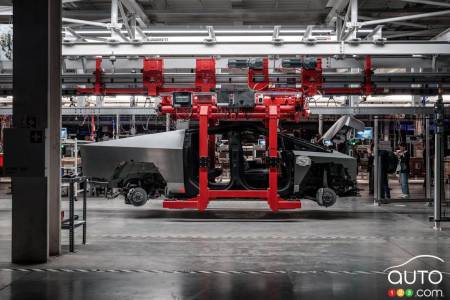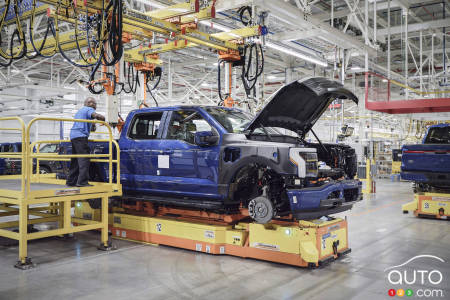• Electric vehicles will soon be cheaper to build than gasoline-powered ones, according to an analysis firm.
While the electric transition is proceeding at a significant interesting pace (some would like it to be faster, others less so), one drag on new buyers “going electric” is the high price of EVs currently on the market.
No matter what the offer or the technology, if the price is high, fewer buyers will be able to jump in. It's a simple question of logic... and mathematics.
There is hope on the horizon, at least if a study by US-based technology analysis firm Gartner is anything to go by. The Canadian site of the Automotive News group provided a summary of their findings.

The balance of power shifts in 2027
Gartner's main conclusion is that by 2027, electric vehicles will be cheaper to build than combustion-engine (ICE) models. The driving force behind lower production costs? New manufacturing techniques and lower battery costs, this according to Pedro Pacheco, Gartner's VP of Research.
Pacheco explains that the cost of batteries is falling, but that production costs will fall faster thanks to innovations such as “gigacasting”, a technique that involves casting large sections of the car in a single piece, rather than using dozens of welds and bonding agents. Tesla, which is cited as a leader in innovation and assembly cost reduction, was a pioneer of the process.
“Tesla and others have looked at manufacturing in a radically new way,” Pacheco told Automotive News Europe. He estimates that gigacasting alone can reduce the cost of producing vehicle bodies by at least 20 percent. Further savings can be achieved by using the battery as a structural element.
When will buyers see the savings?
The question of when these savings will translate into lower model prices depends on the manufacturer, says Pacheco. His belief is that price parity between electric models and those with comparable combustion engines should be achieved by 2027.
Caution is in order here. Before the turn of the 2020s, we were promised price parity by 2023.
Gartner is still forecasting strong growth in electric-vehicle sales, with half of all vehicles sold in 2030 being fully electric. However, Pacheco made an interesting statement about the players in the EV sector world, namely that the market was entering a “survival of the fittest” rather than a “gold rush” period. Make way for the strongest, in other words.
He describes 2024 as one of transition in the European EV market, with Chinese companies such as BYD and MG expanding their sales networks and ranges, while traditional manufacturers such as Renault and Stellantis prepare to launch lower-cost models.
“There's a lot going on that won't necessarily impact sales, but they're gearing up for something much bigger,” he added.
As for start-ups, he offers a word of caution. According to him, 15 percent of firms created in the last decade will go bankrupt, particularly those that depend on outside investment to keep them going.
Fisker, for example, will need help to survive.
In short, the next few years are going to be turbulent. This is an extraordinary time in automotive history when you think about it.




